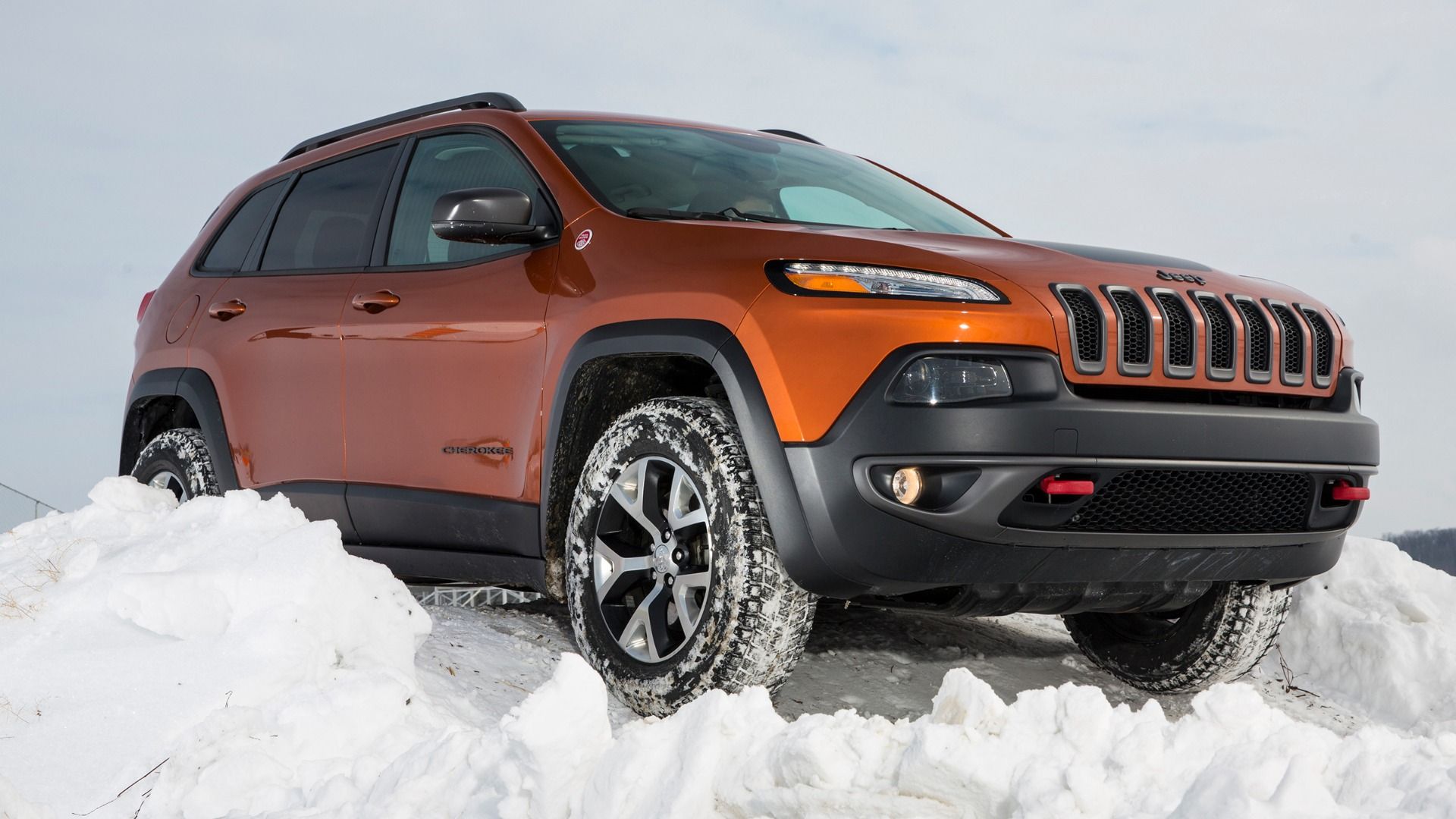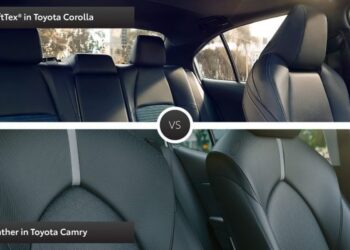Are you thinking about buying a Jeep Cherokee XJ? This iconic SUV has earned a loyal fanbase for its ruggedness and off-road capabilities.
But here’s the thing—some model years might cause you more headaches than adventures. You don’t want to end up stuck with costly repairs or frustrating issues, right? That’s why it’s crucial to know which Jeep Cherokee XJ years to avoid before making your decision.
In this guide, we’ll break it all down for you, so you can make a smart choice and drive away with confidence. Keep reading—this could save you a ton of time, money, and stress!

Credit: carbuzz.com
Common Problems In Jeep Cherokee Xj
The Jeep Cherokee XJ is a popular SUV with a loyal fan base. Despite its popularity, certain years of this model are known for issues. These problems can affect performance, safety, and long-term reliability. Understanding common issues helps potential buyers make informed decisions.
Engine Issues
The 4.0L inline-six engine in the Cherokee XJ is durable but not flawless. Some models experience overheating, especially during long drives in hot weather. Leaks from the rear main seal are also common. This can lead to oil loss and engine damage if not addressed. Misfires may occur due to faulty sensors, spark plugs, or ignition coils. Regular maintenance can minimize these engine problems.
Transmission Failures
Automatic transmissions in certain XJ models are prone to failure over time. Drivers often report slipping gears or delayed shifting. Low transmission fluid levels or worn-out components are common causes. Manual transmission models may face clutch wear issues. Addressing these concerns early can prevent costly repairs.
Electrical System Faults
Many Jeep Cherokee XJs experience electrical problems as they age. Faulty wiring can lead to issues like non-functioning lights or power windows. The alternator and battery are also frequent trouble spots. Inconsistent dashboard readings or warning lights are signs of electrical faults. Diagnosing and fixing these issues can be challenging.
Rust And Corrosion
Rust and corrosion are significant concerns for older Cherokee XJs. The undercarriage and wheel wells are particularly vulnerable. In regions with harsh winters, salt exposure can accelerate rusting. Frame rust can compromise the vehicle’s structural integrity. Regular inspections and rust-proofing treatments can help prolong the vehicle’s lifespan.
Years Linked To Major Mechanical Failures
The Jeep Cherokee XJ is a beloved SUV for off-road enthusiasts and daily drivers. Despite its rugged reputation, certain production years have been linked to significant mechanical failures. These issues have tarnished the reliability of specific models, making them less desirable for long-term ownership. Knowing which years to avoid can save you from costly repairs and headaches.
Early Production Models
The first-generation Cherokee XJ models, produced between 1984 and 1987, experienced frequent mechanical issues. These early models faced challenges with the cooling system, leading to overheating problems. Electrical system faults were also common in these years, causing unpredictable failures. Buyers often encountered issues with fuel delivery, impacting engine performance and reliability.
Years With Engine Reliability Concerns
Some XJ models produced between 1990 and 1993 struggled with engine durability. The 4.0L inline-six engine, while powerful, had reported issues with cracked cylinder heads. Poor oil circulation in these years led to premature wear and engine failures. Owners often complained about persistent oil leaks that required frequent repairs.
Models With Poor Transmission Performance
The 1989 and 1996 Cherokee XJ models were notorious for transmission problems. Automatic transmissions in these years often failed prematurely, requiring costly replacements. Hard shifting and gear slipping were common complaints among drivers. Poor manufacturing quality led to reduced transmission lifespan in these models.
Impact Of Design Changes Over The Years
The Jeep Cherokee XJ has been a favorite among off-roaders and adventurers for decades. But not all model years are created equal. Design changes over the years brought both improvements and challenges, leaving some years less desirable than others. Let’s dig into how key design shifts impacted performance and reliability.
Transition To Fuel Injection Systems
One of the significant changes in the Jeep Cherokee XJ was the switch from carbureted engines to fuel injection systems in the late 1980s. This upgrade improved engine efficiency and made cold starts more reliable. However, it also introduced a learning curve for DIY mechanics who were used to the simplicity of carburetors.
By the early 1990s, fuel injection had become standard, but early systems had issues like failing sensors and inconsistent fuel delivery. If you’re considering buying an XJ from these years, be prepared to inspect the fuel system thoroughly. Ask yourself: do you have the patience to troubleshoot a failing throttle position sensor or replace a faulty injector?
Safety Upgrades And Their Downsides
As safety regulations evolved, the XJ incorporated features like airbags and anti-lock brakes in the early 1990s. While these upgrades made the Cherokee safer, they also added complexity. Airbag systems, for example, can fail with age, leading to costly repairs.
Anti-lock brake systems (ABS) were another mixed bag. They improved stopping power but were prone to malfunctions in earlier implementations. If you’re eyeing a mid-90s XJ, double-check the ABS system—it might be more headache than help after decades of wear.
Suspension Modifications In Later Models
The Jeep Cherokee XJ’s rugged suspension was one of its standout features. However, later models saw tweaks aimed at improving on-road comfort. These changes often softened the ride but compromised off-road capability.
For example, 2000 and 2001 models featured low-pinion Dana 30 front axles, which were less robust than earlier high-pinion versions. If you plan to take your XJ off the beaten path, you may need to invest in suspension upgrades to restore its trail-ready toughness. Are you ready to spend extra to achieve the durability earlier models offered by default?
Understanding how design changes impacted the XJ over the years can help you make an informed decision. Always weigh the trade-offs and consider how you plan to use your Cherokee. The perfect XJ might not be the newest or flashiest—it’s the one that matches your needs and lifestyle.
Years With High Maintenance Costs
Some Jeep Cherokee XJ models are notorious for high maintenance costs. Owners often face unexpected expenses due to specific mechanical and design issues. Understanding which years are problematic can save both money and frustration.
Parts Availability Challenges
Older Jeep Cherokee XJ models often have limited parts availability. As these vehicles age, finding OEM parts can become increasingly difficult. Aftermarket replacements may not always meet the same quality standards. This issue drives up costs, especially for rare components like suspension parts or engine sensors. Owners may need to rely on salvage yards, which adds time and effort to repairs.
Recurring Repair Needs
Certain years of the Jeep Cherokee XJ suffer from recurring mechanical problems. Common issues include faulty cooling systems and worn-out transmissions. These repairs are not only frequent but also expensive. Electrical problems, like failing power windows or dashboard lights, are also widespread in some models. Over time, these recurring repairs can strain even the most patient owners.
Models With Frequent Recalls
Some Jeep Cherokee XJ years have a history of frequent recalls. These recalls often address critical safety issues, such as faulty fuel lines or brake systems. While repairs for recalls are typically covered by manufacturers, they highlight underlying design flaws. Owners of these models may face additional, non-recall-related issues. This pattern increases the overall maintenance burden.
Tips For Choosing The Right Year
Choosing the right year for a Jeep Cherokee XJ can be tricky, especially with models spanning decades. Some years come with reliable performance, while others may have recurring issues. Knowing what to look for can save you from costly repairs and buyer’s remorse. Let’s break it down with actionable tips to help you make a confident choice.
Spotting Well-maintained Models
A Jeep Cherokee XJ’s condition often speaks louder than its year. Pay attention to maintenance records. A well-documented history shows the owner cared for the vehicle.
Look for signs of neglect—rust, worn-out interiors, or mismatched parts. Even a “good” year can turn problematic if the previous owner cut corners.
Consider test-driving multiple XJs and compare how they feel. Does the steering feel tight or loose? Are there odd noises when accelerating? Trust your instincts if something feels off.
Key Features To Look For
Safety upgrades and performance enhancements vary across years. For example, models from the late 1990s introduced better airbags and more refined drivetrains.
Check for the 4.0L inline-six engine, a standout feature known for durability and power. Avoid models with less reliable engines like the 2.8L V6.
Don’t ignore interior features. If you plan to drive long distances, models with comfortable seats and functioning air conditioning can make all the difference.
Trusted Resources For Research
Online forums like Jeep Cherokee XJ enthusiasts’ groups can offer insights from owners who’ve lived with these vehicles. Websites like Edmunds and Kelley Blue Book provide reliable specs and price estimates.
Consider using VIN check services like Carfax or AutoCheck. These tools reveal accident history, mileage discrepancies, and ownership details that may be hidden during a sale.
Ask local mechanics for their opinions on specific years. They’ve likely worked on various XJ models and can share what they’ve seen most frequently in their shop.
Choosing the right Jeep Cherokee XJ doesn’t have to be overwhelming. Focus on condition, prioritize key features, and lean on trusted resources. Which year are you leaning toward?

Credit: www.miloschusedcars.com

Credit: www.mgprestigecar.fr
Frequently Asked Questions
What Are The Worst Jeep Cherokee Xj Years To Avoid?
Some 1990-1992 models had electrical issues and transmission problems. 1999-2001 models faced cylinder head cracking problems.
Why Do Certain Jeep Cherokee Xj Years Have Issues?
Poor manufacturing or design flaws caused electrical, engine, and transmission problems in specific years.
Are Jeep Cherokee Xjs From The 2000s Reliable?
Models from 1999-2001 often had engine and cooling system issues. Later years improved reliability.
How Can I Identify A Problematic Jeep Cherokee Xj?
Look for frequent overheating, transmission slipping, or electrical malfunctions in older models.
Is It Expensive To Fix Common Jeep Cherokee Xj Issues?
Repairs can be costly, especially for engine and transmission problems. Check repair costs before buying older models.
Conclusion
Choosing the right Jeep Cherokee XJ can save time and money. Some years had issues that could lead to costly repairs. Researching common problems helps you avoid unreliable models. Focus on well-maintained vehicles with a good history. Regular maintenance also plays a key role in long-term performance.
By staying informed, you can make a smarter buying decision. A dependable Jeep Cherokee XJ will provide years of adventure and reliability. Always inspect thoroughly or consult a trusted mechanic before purchase. Careful planning ensures your investment brings value and peace of mind.

















